
Seasonal Change Migration & Dormancy

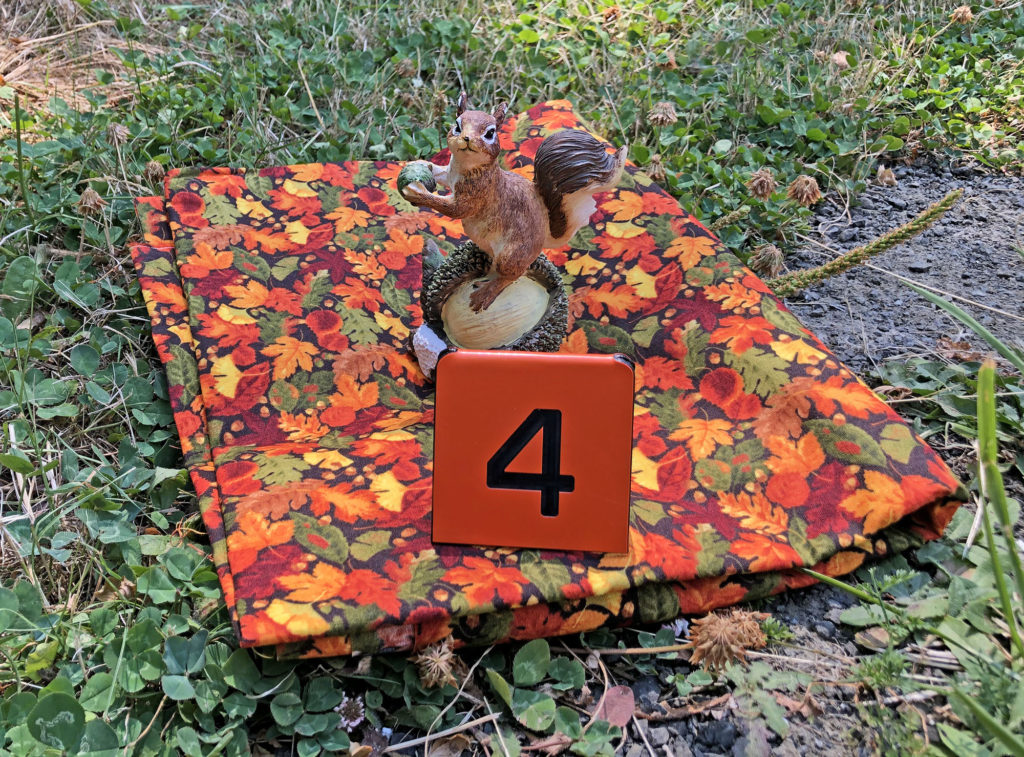
Seasonal Change Objectives
-
Explain how genetics and experience relate to migratory behaviors in various species.
-
Describe how seasonal changes lead to aestivation and hibernation behaviors.
-
Provide examples of how citizen science impacts the acquisition of new knowledge.
Changing conditions can drive animals to migrate from one location to another. This section looks at innate and learned behaviors related to migration.
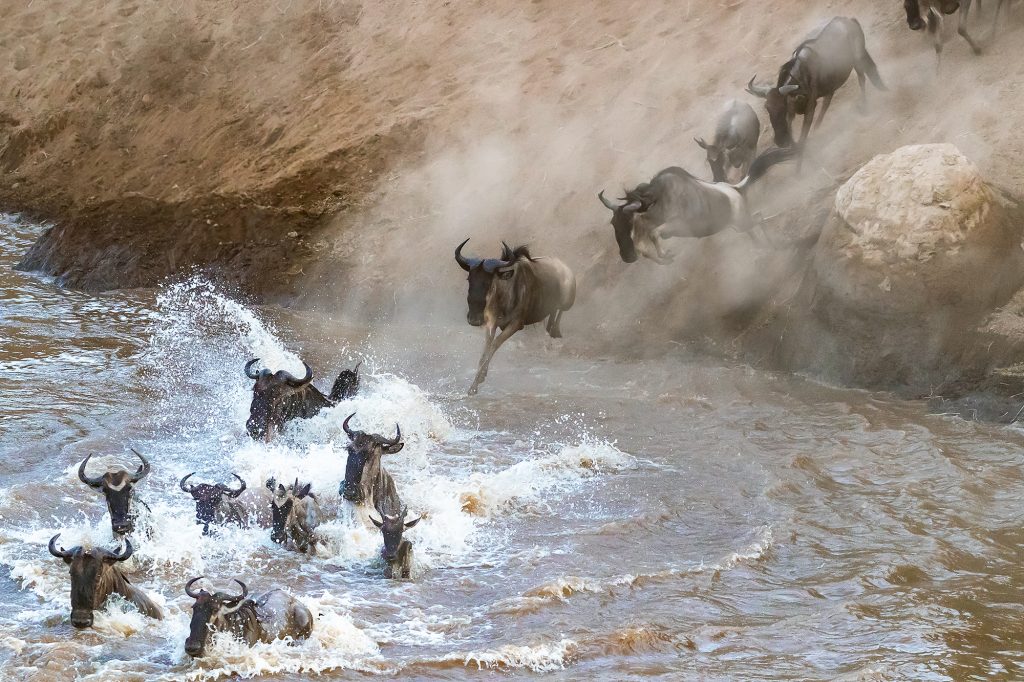
If you have studied world history or sociology, you have probably learned about significant migrations in our own species. Other animals migrate for many of the same reasons: avoiding harsh seasonal changes, leaving areas of limited food availability, escaping conflict, and surviving natural disasters.
The big differences are that humans have more choices in dealing with changing environmental conditions, and we are not as strongly genetically programmed to migrate as many other animal species.
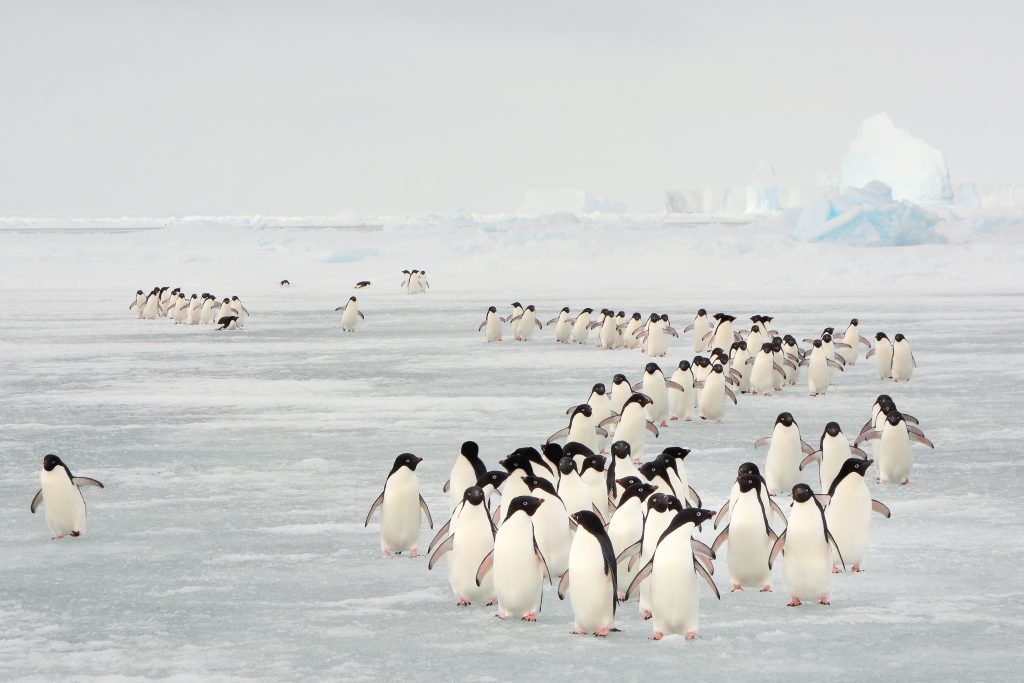
This video introduces innate and learned aspects of animal migration.
Ocean-going (anadramous) salmon not only migrate great distances, they also have to physically change to be able to tolerate different water chemistry. This video uses a game to illustrate the story of salmon runs.
These are hatchery salmon that have returned to the stream next to the facility where they were raised. The fish in the second video are spawning.
An indicator of the cultural significance of salmon is how many historic and contemporary art forms in our region incorporate the salmon life cycle.
One of the most dramatic migrations in the world is the thousands of miles traveled by a subspecies of Monarch Butterfly. This video provides an overview.
Monarch butterfly on a zinnia flower
Now a closer look at one of the primary factors that drives migration: seasonal changes.

If shifts in seasonal weather are extreme: hot, cold, dry, or wet; animals may go dormant during the harshest months. Dormancy is decreasing overall activity, which reduces metabolism (cellular activity) to the point at which an animal may not need to eat or drink for weeks, even months, at a time.
This video introduces why seasons change and how animals can react to extreme changes.
Does the cause of changing seasons make sense? If not, here are two additional videos that may help.
One of the signs of spring in parts of the world far from the equator is the return of migratory birds to their breeding grounds.
In our area of the Willamette Valley, large flocks of robins return in early spring,

It is basic field practice to not disturb a dormant animal. In the case of rodents like the dormouse or hibernating insects, prematurely waking from a dropped level of metabolism can utilize so much of the animal’s energy reserves that it may not survive the dormant period.
And of course it never makes sense to disturb a bear. Many people are not aware that they can quickly waken from deep sleep. Although if you have seen bears in the winter, you may be aware that some species occasionally break hibernation to forage in the snow and drink water.
The photo is a bear den. Anything this large and well maintained is worth avoiding.

Lady Beetles and Aestivation
Some insect species in regions with hot and dry summers aestivate to avoid desiccation (drying out).
This video introduces lady beetles and aestivation.
This video discusses the lady beetles as they are emerging out of aestivation around our cargo container.
Citizen Science
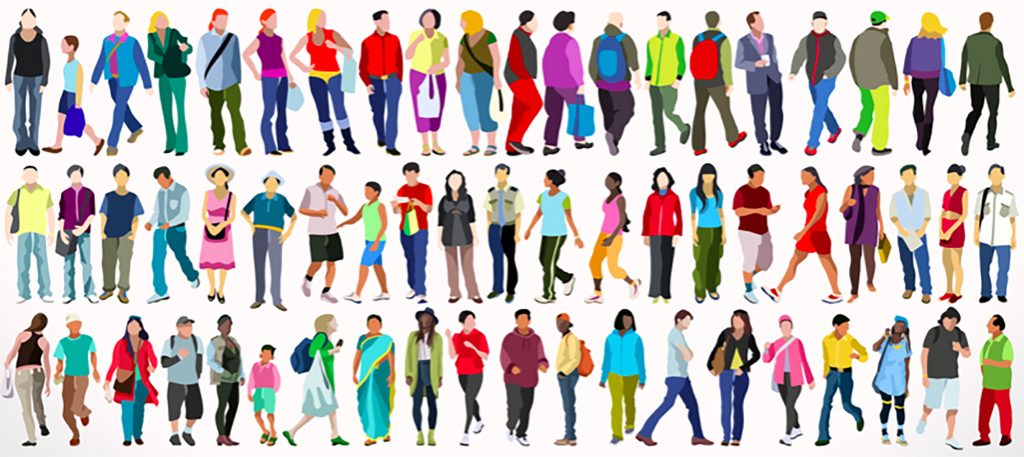
Citizen science at its most basic indicates that people are contributing to the building of new science knowledge even if it is not their primary career. In many cases, people are assisting on weekends and evenings out of interest and concern.
People have resources, access, ideas, and experiences that can advance knowledge significantly. And people bring passion to the research endeavor: they work in extreme conditions for long lengths of time if they are motivated by the topic or organism.
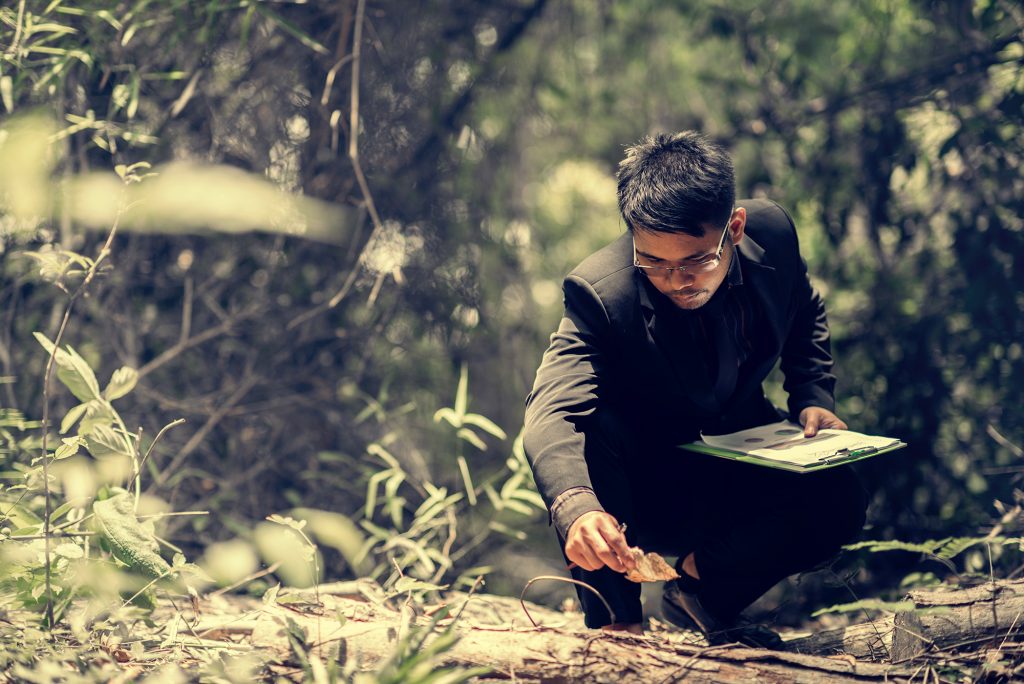
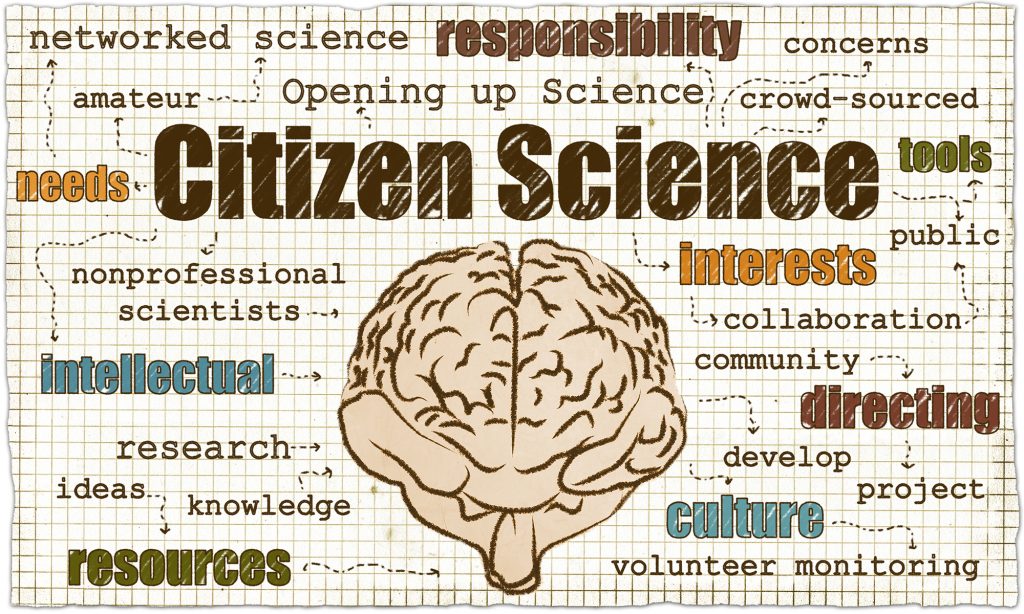
Citizen science activities include:
-
monitoring wild populations
-
collecting data on domesticated animals
-
contributing to and analyzing large data sets
-
providing labor and materials to support research projects
-
funding researchers through crowd sourcing
-
advocating for local and regional research projects
Citizen Science in Action
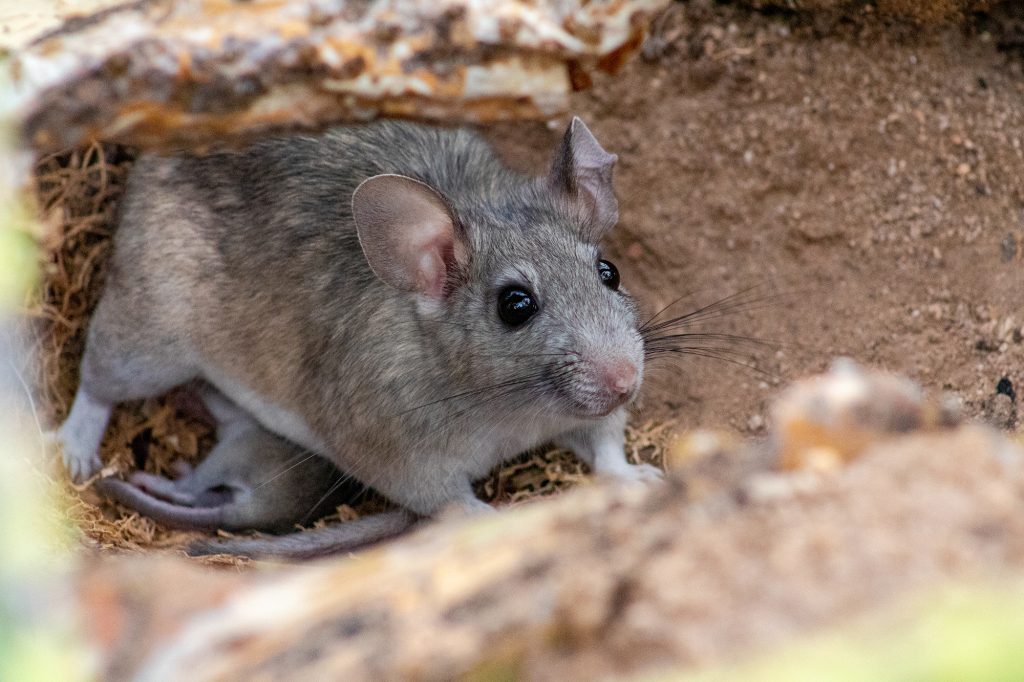
Packrats, also called wood rats, are not actually rats, but rodents in Genus Neotoma that are primarily found in deserts and grasslands of southwestern U.S. and Mexico. To survive in these harsh conditions, packrats have unique behaviors.
Packrats are opportunistic omnivores that have the unusual behavior of dropping whatever they are carrying when they come across something new. They are also attracted to shiny objects that they collect and take back to their elaborate multi-chambered nests.
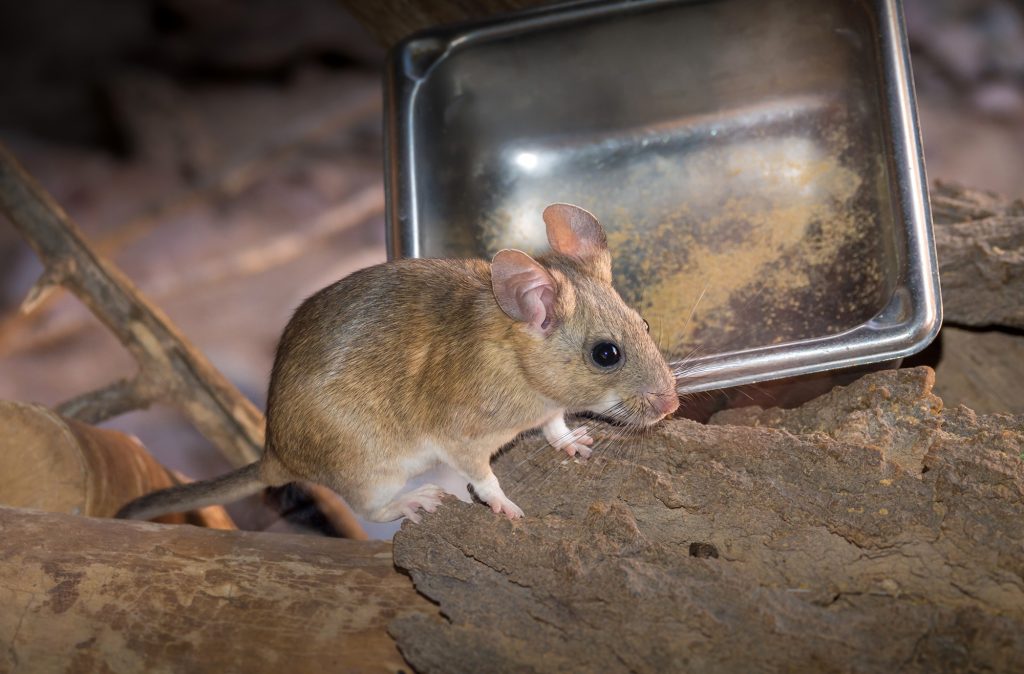
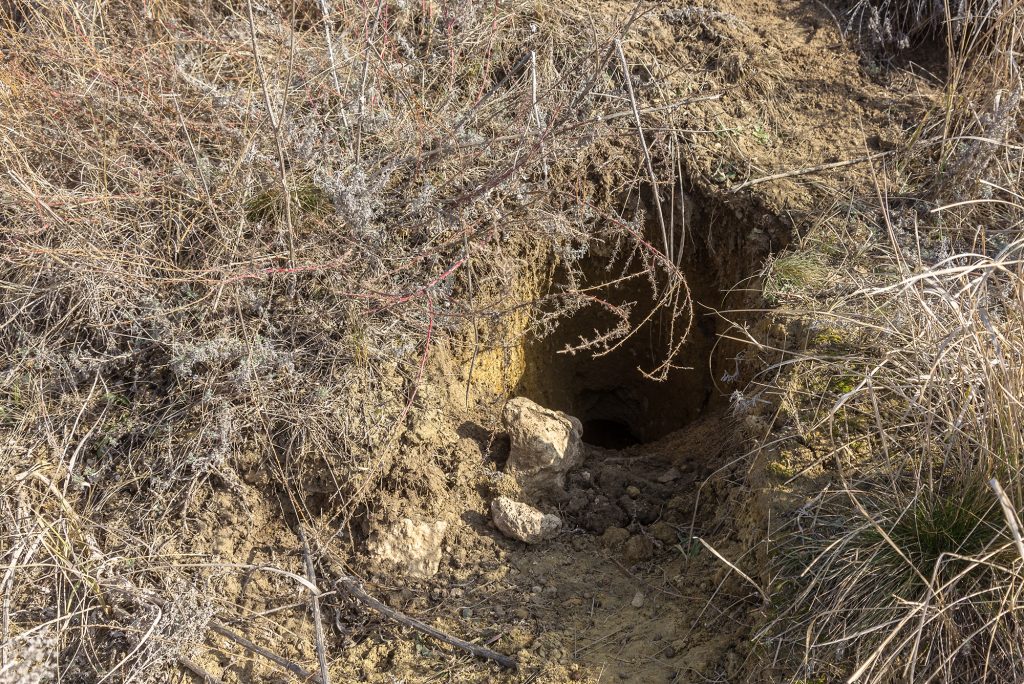
Next to their nests, packrats have middens, structures that hide their debris, including plant materials and crystallized urine. In protected caves and under rock outcrops, some of these middens are over 40,000 years old and are a snapshot of past life in the immediate area.
So researchers wanted to locate these middens, and here is where citizen science came into play.
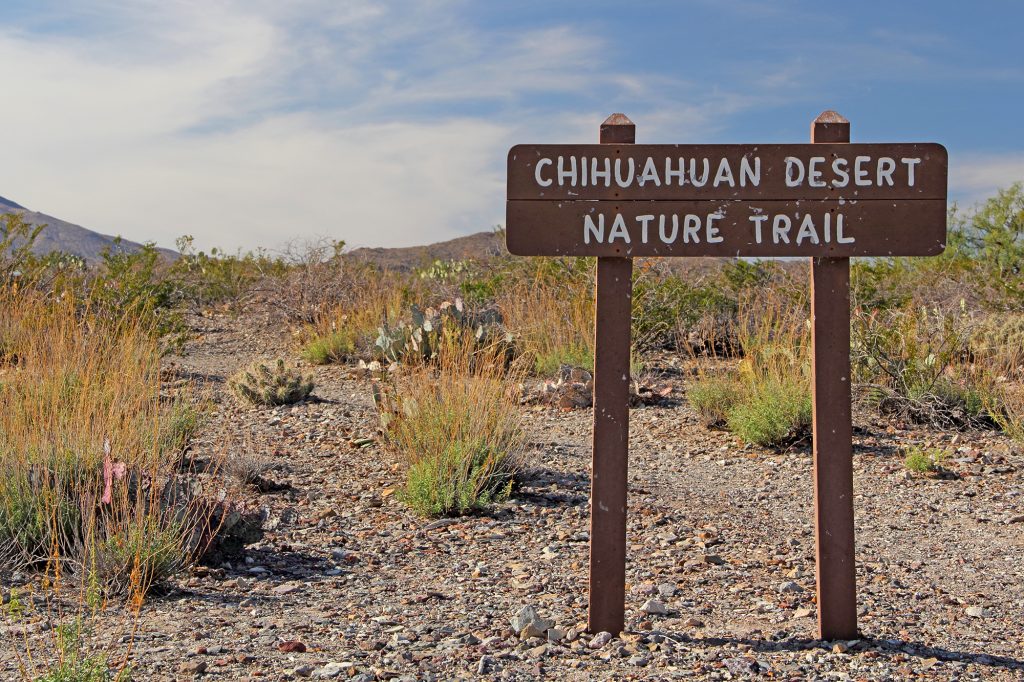
People were asked to report locations of packrat middens they found while out hiking in areas of the Chihuahuan Desert. The procedure was to get as specific of a location as possible, to take photographs so researchers could confirm the find, to note whether there were signs of recent packrat activity, and to try not to disturb the site.
This enabled researchers to study a variety of data sources they would otherwise not have had the time or resources to obtain.
Wherever you are, there are unique species to study, and a variety of signs to indicate animal activity.
Many citizen science projects involve locating, observing, and identifying animals in the field.
There are specific categories of behaviors you are likely to observe, and you will also be looking for these as part of this Guide’s next journal assignment.
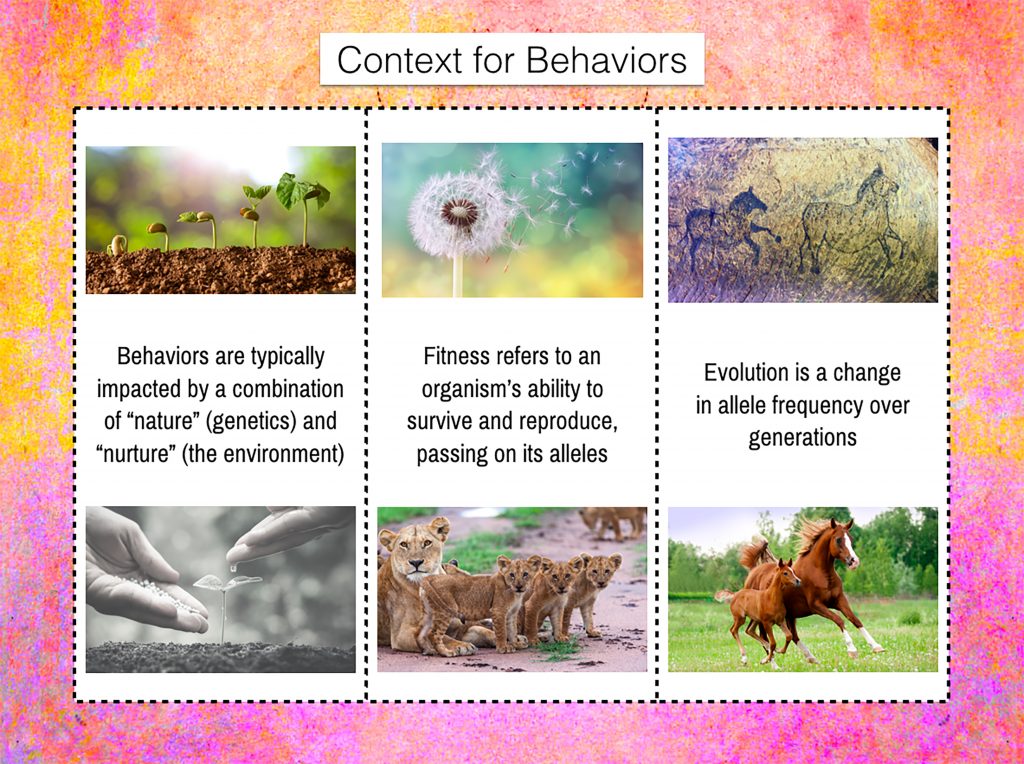
A brief review of nature and nurture, fitness, and evolution to set the context for your observations of animal behaviors. We all infer and draw inferences when observing, it helps to use consistent definitions and to have underlying assumptions clearly stated
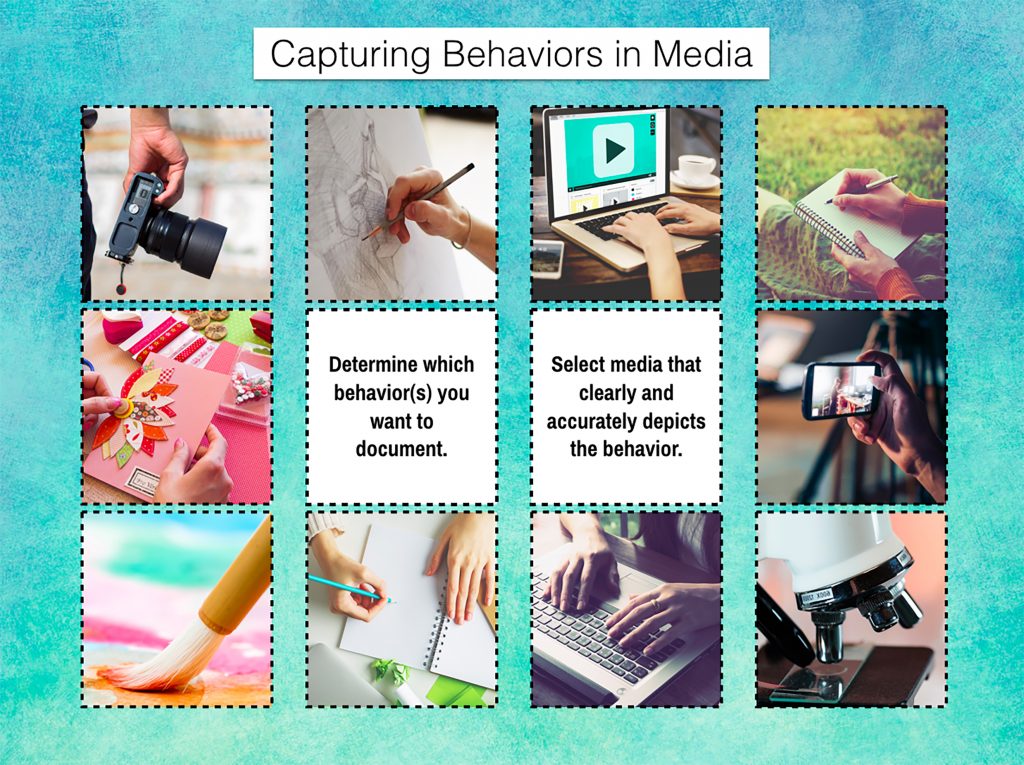
When documenting animal behaviors, different media forms may suit particular behaviors and the message you want to convey. You are mediating a primary experience for your own later use, or for others, and trying to utilize resources to make the mediated experience as authentic as possible.
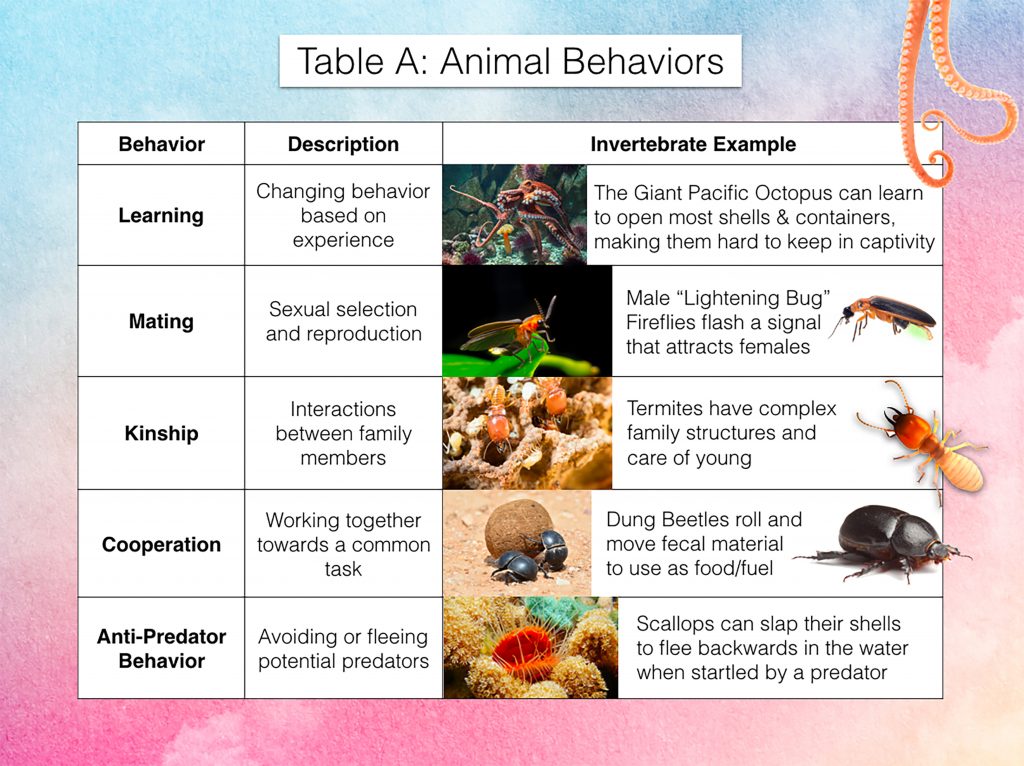
These two tables (A & B) outline common animal behaviors. Some of these are easier to observe than others due to frequency or how overt the behavior presents itself. For example, you may get footage of a robin catching a worm, but have more difficulty observing it raising offspring.
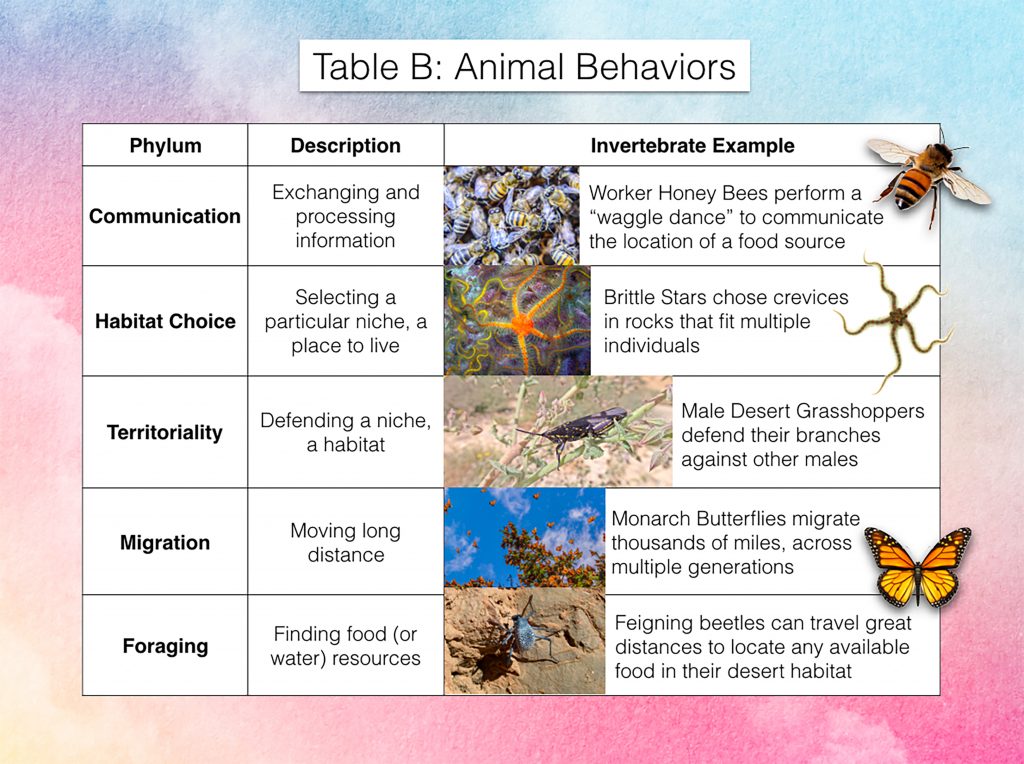
We added invertebrate examples, because people often think of elaborate behaviors only occurring in vertebrates. Not in this course!
Start this Guide’s second journal assignment here
Journal Page #14: Animal Behaviors
For this journal page you are documenting animal behaviors.
This media piece is collecting data specifically about animal behaviors. The animal can be domesticated or wild. You will be looking for behaviors that are listed above (communicating, foraging, etc.) and capturing that behavioral information with field notes. These notes can include photos, videos, sketches, and/or writing.
In case conditions do not permit a field excursion this week, you can use the optional videos below to complete this assignment successfully.
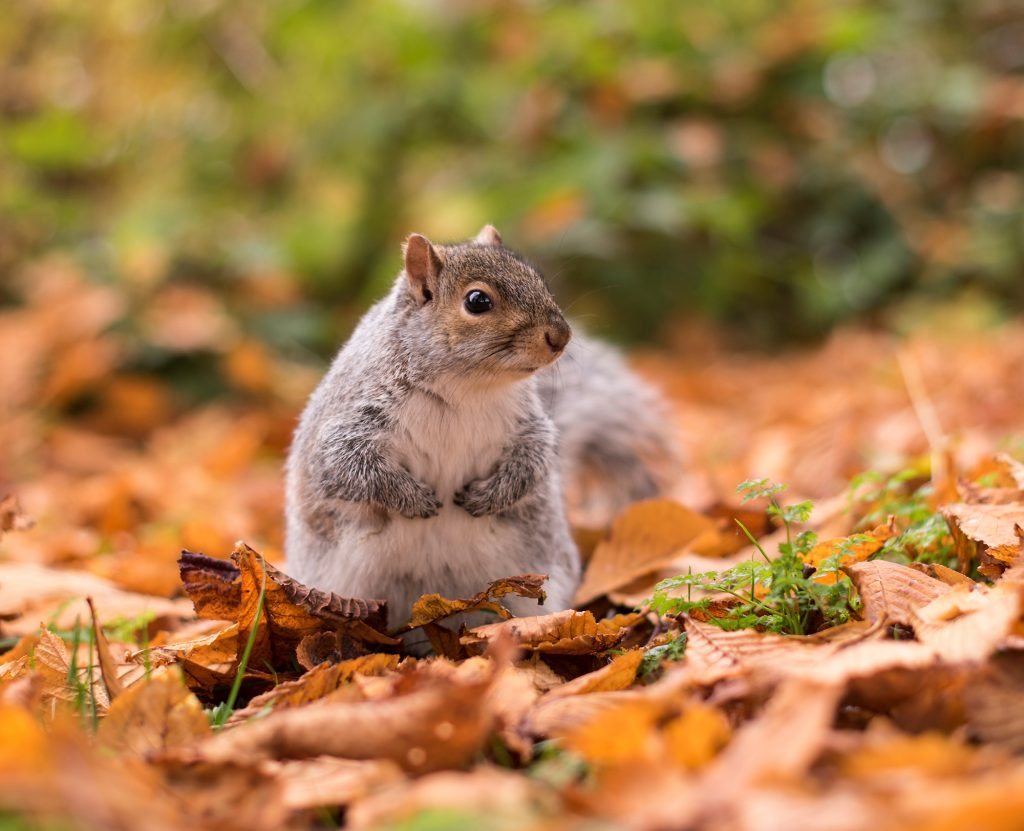
You will be uploading to Canvas your field notes on an animal’s behaviors. Specifically document:
- what the animal was doing.
- how you would classify the behavior (categories are in Tables A & B).
- whether you think the behavior is innate and/or learned.
- whether/how the behavior may impact fitness.
You can use standard field note structure (date, location, time) or your own preferred structure for documenting behaviors.
As always: be alert and travel with a companion in the field whenever possible and minimize impact to any animals and their environment.
Optional videos for assignment
You can use videos as a source of observations for the media piece in case you are not able to access animals for the assignment.
Videos are taken in Newport Oregon, February 2019.
Heading west on waterfront drive, Newport Bay is directly to the left, Pacific Ocean about a mile straight ahead.
Heading east on the same road, Newport OR.
Introduction to sea lions in Newport Bay.
Panorama from the north side of the bay.
Newport Bridge and distant view of sea lion-covered jetty.
Sea lions on a jetty, all are males of different ages. The females stay in the breeding grounds south on the coast of California.
These six videos show the sea lions that were directly below the dock, next to a fish processing facility and a group of shops and restaurants. There are dozens of people with us on the walkway, some crabbing, others tourists like us taking photos and video.
This is the end of the Behaviors Guide content. After you check your knowledge over the material, proceed to the product page.
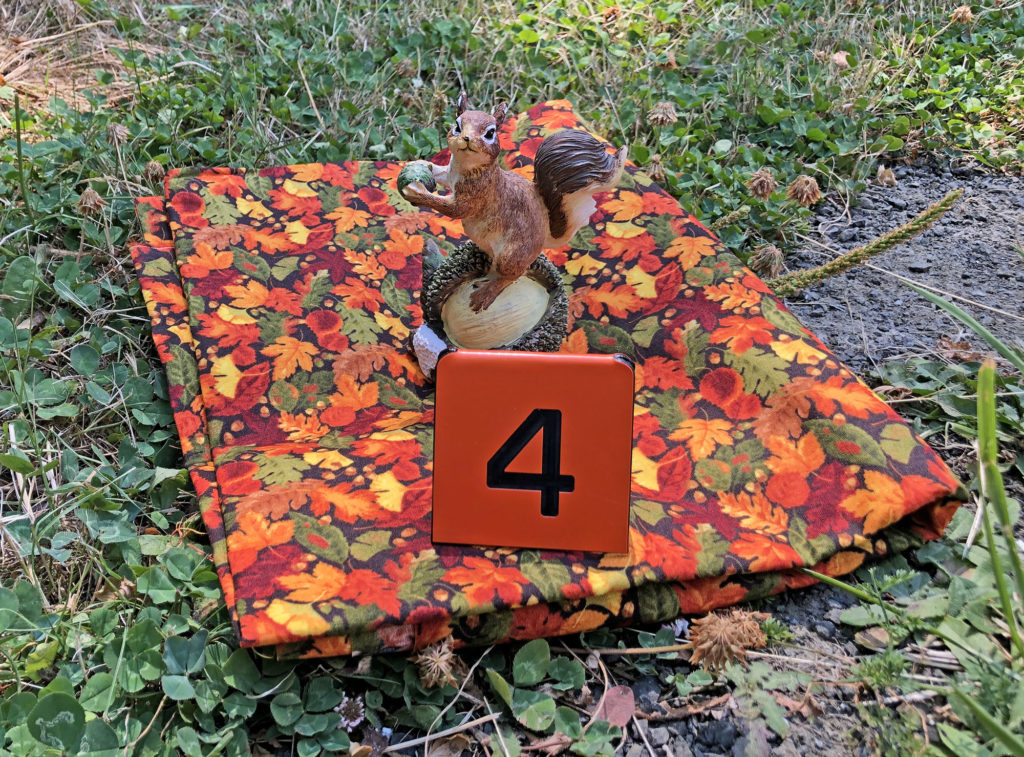
Check your knowledge. Can you:
-
explain how genetics and experience relate to migratory behaviors in various species?
-
describe how seasonal changes lead to aestivation and hibernation behaviors?
-
provide examples of how citizen science impacts the acquisition of new knowledge?



